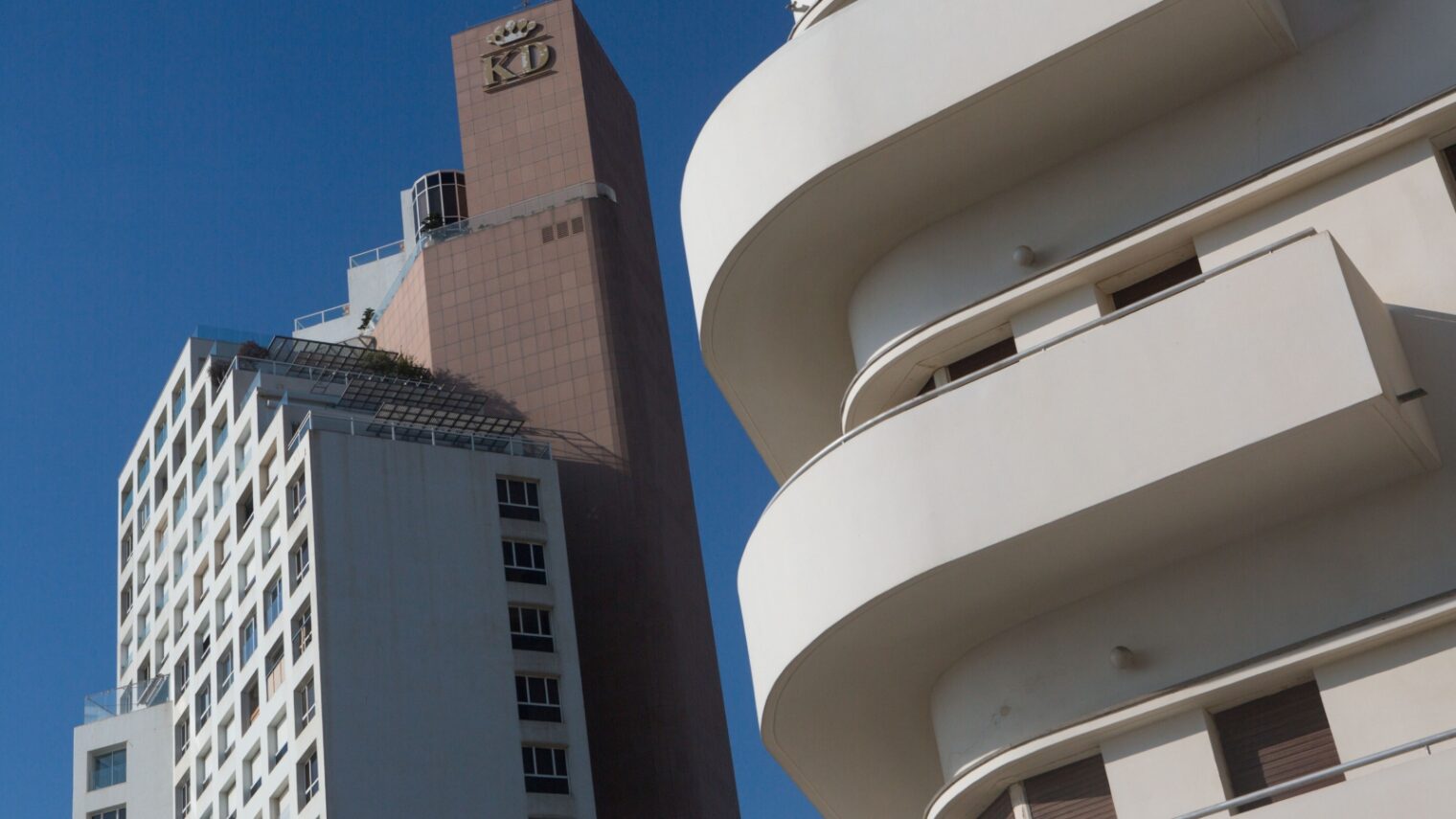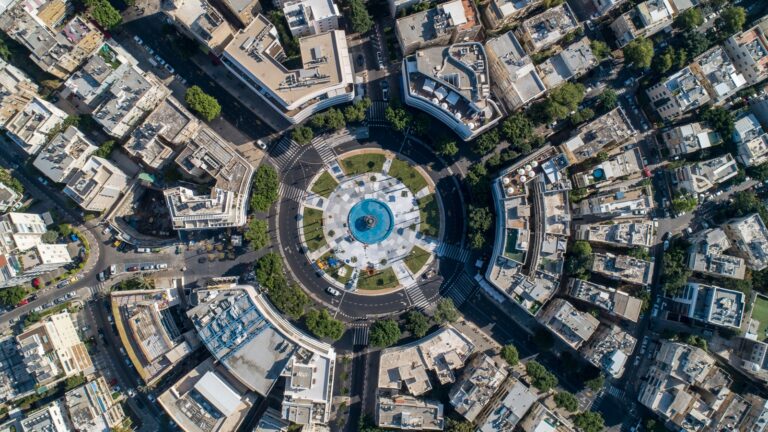From Byzantine to Bauhaus, stone to steel, Israel is a country filled with dozens of architectural styles that lend a diverse and visually fascinating quality to the built landscape of the Holy Land.
Here are 10 books that provide insight into some of the most famous examples of Israeli architecture through the modern age.
If Architecture is a Language, Then a Building is a Story by Eliezer Armon
In this beautiful monograph, Israel’s “desert architect” Eliezer Armon documents 30 years of work that have drawn inspiration from Israel and its landscape, worldwide cultures, martial arts, the Hebrew alphabet and Bible, and Jewish tradition and mysticism.
Among Armon’s projects are the Abraham’s Well Visitors’ Center, Beersheva; Holon Wolfson Railway Station, Tel Aviv; Beersheva Central Railway Station; Ministry of Agriculture & Rural Development, Gilat; “Burning Bush” Synagogue, Mitzpeh Ramon; Kindergarten and Center for the Elderly, Meitar; El-Zahara School, Lod; and the Israeli Air Force Museum, Hatzerim.
Till We Have Built Jerusalem: Architects of a New City by Adina Hoffman

Haifa: City of Steps by Nili Scharf Gold
Starting in her family’s historic Haifa neighborhood of Hadar HaCarmel, Gold examines 20th century buildings whose design reflects European, modernist, Jewish and Arab architectural influences.
She zeroes in on five landmark clusters: Memorial Park on the border between the largest Jewish and Arab neighborhoods in Haifa; the intersection of Herzl and Balfour Streets, whose highlight is the European/Middle Eastern Technion edifice; Talpiot Market; the secular Alliance High School and the religious Great Synagogue; and Ge’ula Elementary School and neighboring buildings that played a historic role in the northern city’s development.
Form and Light: From Bauhaus to Tel Aviv by Yigal Gawze
As the Bauhaus movement celebrates its 100th anniversary this year, Gawze’s photographs capture the abstraction, simplicity and optimism of the Bauhaus (International) architectural style that led to Tel Aviv’s nickname of “White City.” Concentrating on the subtle effects of natural light on architecture, Gawze highlights the encounter between this European-originated building style and its move to the Mediterranean coast. His images reveal the starring role of sunlight in White City architecture.
Sand and Splendor: Eclectic Style Architecture in Tel-Aviv by Tami Lerer (translated by Marlène Chemouni)
Available from the Bauhaus Center in Tel Aviv, this book shows 50 impressive eclectic-style buildings constructed during the 1920s in Tel Aviv. Eclecticism was a worldwide phenomenon that combined elements from various styles to create a new architectural language. Many eclectic-style buildings in Tel Aviv have been demolished or altered over the years, but hundreds remain under preservation.
“Lightfall” is the moniker of the central atrium of the critically acclaimed Herta and Paul Amir Wing of the Tel Aviv Museum of Art, designed by Harvard professor of architecture Preston Scott Cohen and opened in 2011. The vertical lightfall orients the visitor as it leads from one level to another and bathes the lower level in natural light. The exterior surface of the wing, made of 430 polished cement panels, breaks at disparate-angled modules.
Dreaming Gardens: Landscape Architecture and the Making of Modern Israel by Kenneth Fasla Helphand
Israeli landscape architects have been integral to the country’s development. In this book, Helphand looks at some iconic examples: The Valley of the Destroyed Communities at Yad Vashem, Haas-Sherover Promenade in Jerusalem, David Ben-Gurion’s gravesite at Sde Boker, Yarkon Park in Tel Aviv, national parks, university campuses and kibbutzim.
Helphand, now professor emeritus of landscape architecture at the University of Oregon, wrote this book in 2002 when he was a frequent visiting professor at the Technion-Israel Institute of Technology. He is an honorary member of the Israel Association of Landscape Architects.
Majesty and Glory: Synagogues in the Land of Israel by Abraham Israel Gellis
This colorful collection of synagogues from all over Israel spans ancient to modern, and depicts representative styles of diverse communities returning from the diaspora.
Gellis, a 10th-generation Jerusalemite, shares the history of each of house of worship pictured.
Churches and Monasteries in the Holy Land by David Rapp
This visual pilgrimage into Christianity’s roots in the Holy Land takes the reader to 33 sites such as Nazareth’s Basilica of the Annunciation, Bethlehem’s Church of the Nativity, Jerusalem’s Church of the Holy Sepulchre, the Church of the Beatitudes in the Galilee, a baptismal site on the Jordan River, the Chapel of the Ascension on the Mount of Olives, and the Room of the Last Supper.
Yad Vashem World Holocaust Remembrance Center in Jerusalem is a complex of buildings and memorial gardens. The latest addition, inaugurated in 2005, contains a museum of Holocaust history and ancillary structures designed by Haifa native Moshe Safdie, a globally renowned architect. His many well-known Israeli works include Hebrew Union College, the David Citadel and Mamilla hotels and Ben-Gurion International Airport.
This book explores how Safdie chose to express commemoration and history in the prism-like triangular museum using architectural features such as a 200-meter glass skylight, rounded arches, a gently sloping floor that creates the feeling of descent and then ascent toward the exit, and dynamic soaring exterior walls overlooking the landscape of modern Jerusalem.

























